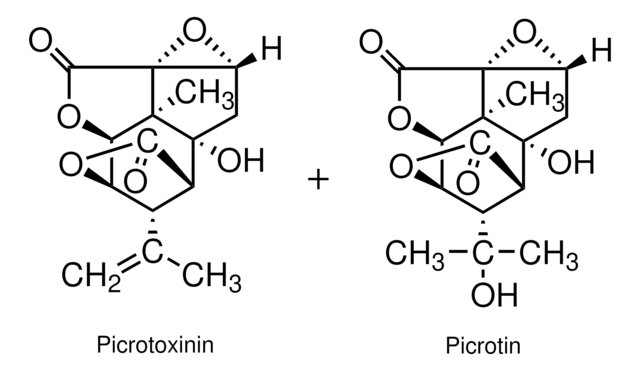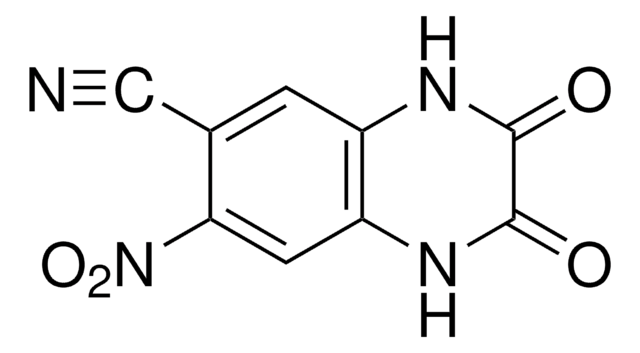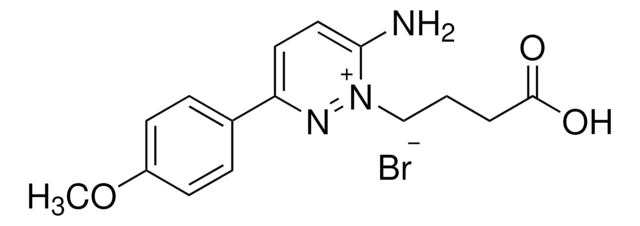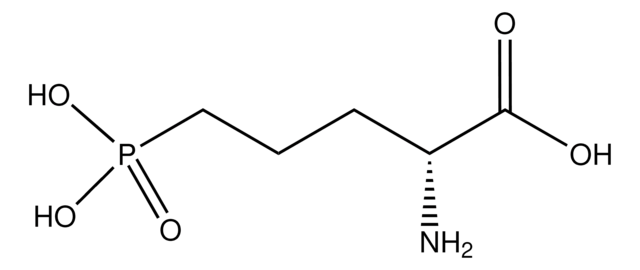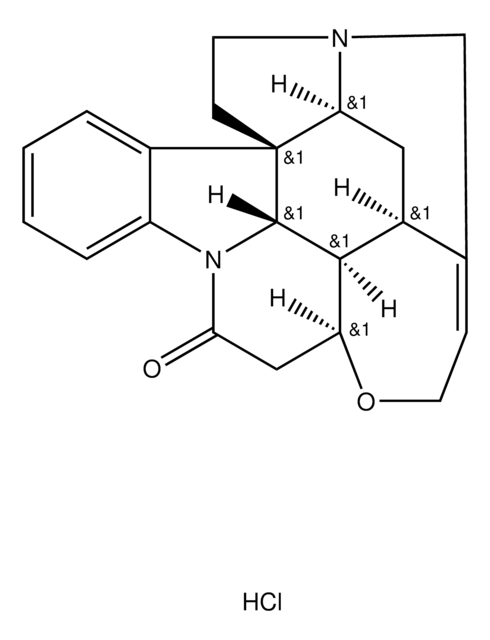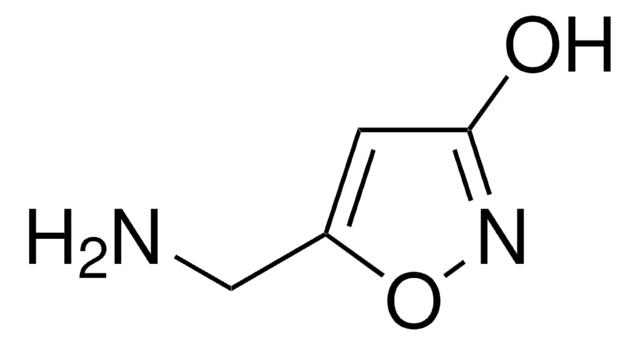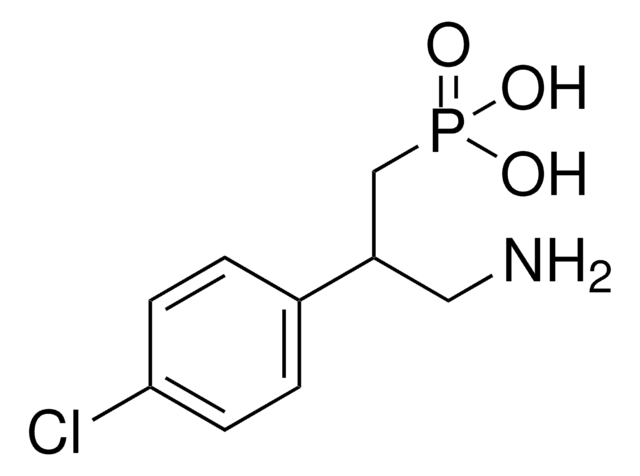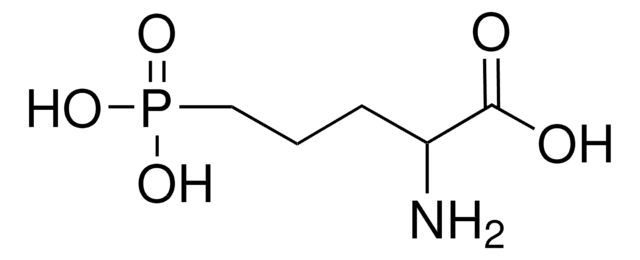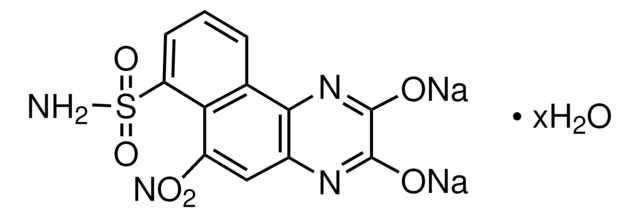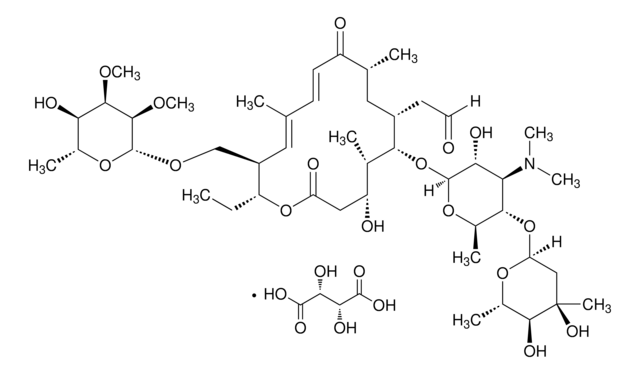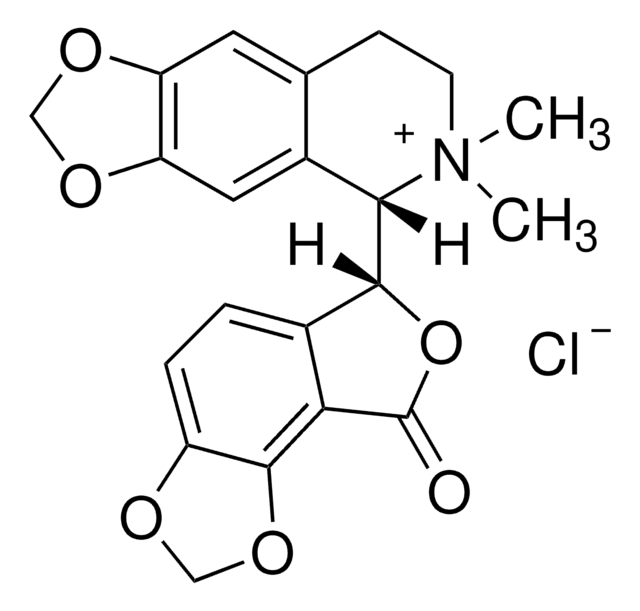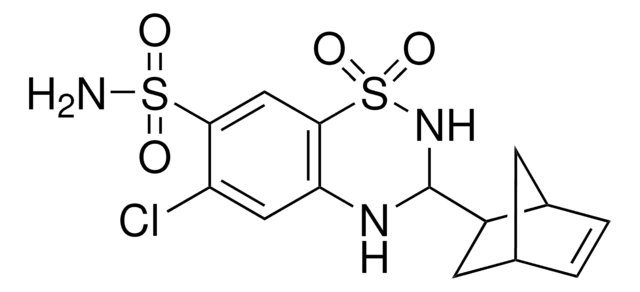S106
SR-95531
≥98% (HPLC), powder
Synonim(y):
2-(3-Carboxypropyl)-3-amino-6-(4 methoxyphenyl)pyridazinium bromide, Gabazine
About This Item
Polecane produkty
Poziom jakości
Próba
≥98% (HPLC)
Postać
powder
kolor
white
rozpuszczalność
H2O: >10 mg/mL
ciąg SMILES
[Br-].COc1ccc(cc1)-c2ccc(N)[n+](CCCC(O)=O)n2
InChI
1S/C15H17N3O3.BrH/c1-21-12-6-4-11(5-7-12)13-8-9-14(16)18(17-13)10-2-3-15(19)20;/h4-9,16H,2-3,10H2,1H3,(H,19,20);1H
Klucz InChI
GFZHNFOGCMEYTA-UHFFFAOYSA-N
informacje o genach
human ... GABRA1(2554) , GABRA2(2555) , GABRA3(2556) , GABRA4(2557) , GABRA5(2558) , GABRA6(2559) , GABRB1(2560) , GABRB2(2561) , GABRB3(2562)
rat ... Gabra2(29706)
Działania biochem./fizjol.
Cechy i korzyści
Kod klasy składowania
11 - Combustible Solids
Klasa zagrożenia wodnego (WGK)
WGK 3
Temperatura zapłonu (°F)
Not applicable
Temperatura zapłonu (°C)
Not applicable
Środki ochrony indywidualnej
Eyeshields, Gloves, type N95 (US)
Certyfikaty analizy (CoA)
Poszukaj Certyfikaty analizy (CoA), wpisując numer partii/serii produktów. Numery serii i partii można znaleźć na etykiecie produktu po słowach „seria” lub „partia”.
Masz już ten produkt?
Dokumenty związane z niedawno zakupionymi produktami zostały zamieszczone w Bibliotece dokumentów.
Klienci oglądali również te produkty
Nasz zespół naukowców ma doświadczenie we wszystkich obszarach badań, w tym w naukach przyrodniczych, materiałoznawstwie, syntezie chemicznej, chromatografii, analityce i wielu innych dziedzinach.
Skontaktuj się z zespołem ds. pomocy technicznej